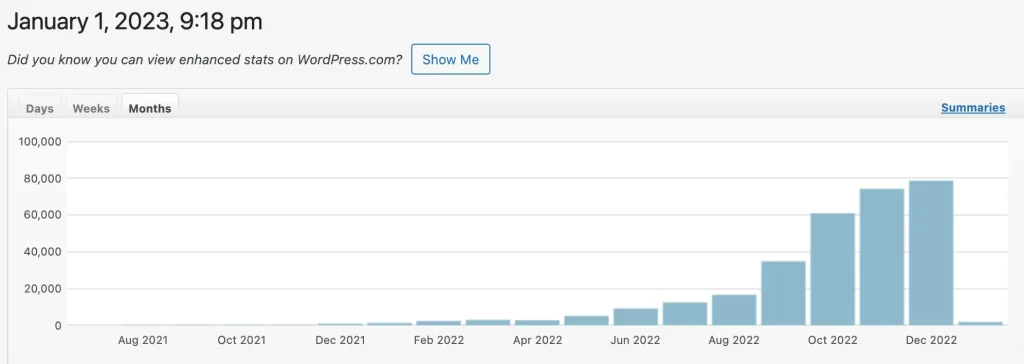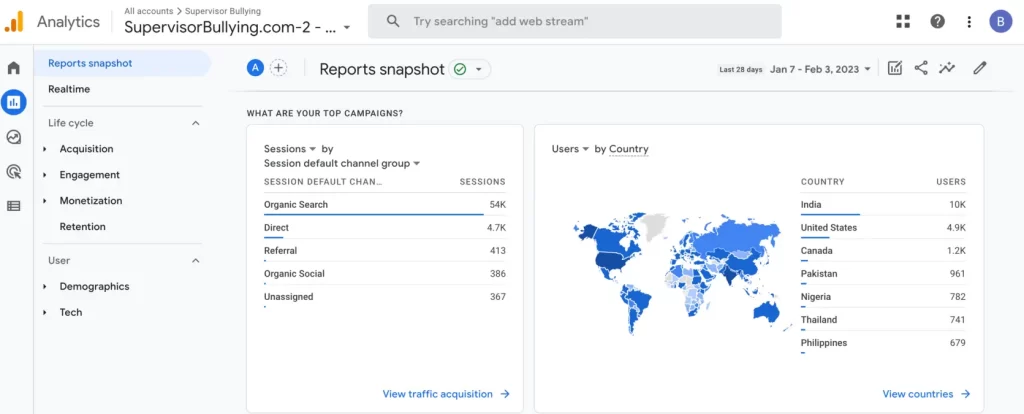The First Annual University of Ottawa Supervisor Bullying ESG Business Risk Assessment Briefing (Release date: Feb. 17, 2023): An open letter to the University of Ottawa Board of Governors.
Chair, Jennifer Adams; Vice Chair, François Guimont; other distinguished members of the University of Ottawa Board of Governors, Omar Abouzaher, Kafia Barkat, Alex Beraskow, David Chemla, Pierre Cyr, Christine Dallaire, Jacques Frémont, Joe Geurts, Stéphane Giguère, Justine Hendricks, Paul Hindo, Doreen Hume, André Juneau, Anna Keller, Stewart Kiff, Nomi Claire Lazar, Joanne Lefebvre, Hannan Mohamud, Deanna Monaghan, Donatille Mujawamariya, Philip Murphy, Norm Odjick, François-Éric Racicot, Marianne Saikaley, Alexander Steeves, Hartley Stern, Jessica Tchida, Lucie Tedesco, Shaunt Tokmakjian, and Gina Wilson:
Greetings.
- Updates (Since Feb. 17, 2023)
- Executive Summary
- Introduction
- Background
- Methodology
- Key Findings and Analysis
- Recommendations
- References
- Bibliography
- Appendices
- Version Control
Updates (Since Feb. 17, 2023)
Please follow this link for ongoing updates to this briefing posted on a Google Docs page:
uOttawa bullying business risk updates
Executive Summary
The expose of supervisor bullying at the University of Ottawa’s Faculty of Engineering represents a clear and growing business risk to the medium and long-term economic vitality of the University. Analysis shows if the blog (SupervisorBullying.com) does not grow in monthly views or visits above its current level of about 2.7K daily views (if Jan. and Feb., thus far, numbers hold, 3K daily views), by Jan., 2024, the blog (aka website) would receive around one million views. The blog has been growing at a variable rate since its launch in July 2021, making long-term estimations precarious. For example, the number of monthly views nearly doubled from Aug. to Sep. and from Sep. to Oct.
SupervisorBullying.com monthly views (Jetpack)
| Month | Views |
| June 2022 | 9,079 |
| July 2022 | 12,414 |
| Aug. 2022 | 16,533 |
| Sep. 2022 | 34, 774 |
| Oct. 2022 | 60, 905 |
| Nov. 2022 | 74,154 |
| Dec. 2022 | 78,622 |
| Jan. 2023 | 93,433 |
| Feb. 16, 2023 | 49,499 |
It is not difficult to raise the number of website visitors and views. It is something I control by the number and nature of posts I choose to post. The well from which the blog posts come – the Internet and my brain – can never dry up. That the University of Ottawa has a supervisor bullying problem is practically impossible for the website visitors not to notice – the blog’s masthead reads: uOttawa Supervisor Bullying: A spotlight on uOttawa’s bullying problem. All visitors will notice the masthead, and some will want to know more and will click Home or About – and these visitors are the people you need to worry about the most. The blog of course has a global reach, with the majority of visitors to the website hailing from either India (about 35.3% of global total) or North America (about 21.5% of global total). Local SEO copywriting is a legitimate web development practice I have hitherto neglected.
Career assassination is a most deplorable crime against human rights. My resolve to prevent such a crime from happening again at uOttawa will never be shaken. But the University should see my supervisor bullying case as an opportunity for policy improvement and leadership. It is not too late to be on the right side of history and change – it is only a matter of time before corporations begin to adopt whistleblower protection policies. I do not need to tell you about the tumultuous conditions redefining higher education in society. The last thing the University needs is some bad press. It is not worth the risk.
The University can nip it in the bud through meaningful policy reforms that focus on flattening the power relations between university professors and graduate students/postdoc researchers. I am prepared to forgive and forgive the deplorable gang attack on my academic career by my former thesis advisory committee members if and only if the University undertook meaningful steps towards anti-bullying policy reforms. I have presented several insider’s recommendations for policy reform that are specific to the University of Ottawa and thus can in fact bring about change that reduces the likelihood of a repeat of my career mobbing case.
1. Introduction
Is the University of Ottawa adequately and responsibly demonstrating a duty of care with respect to its ESG commitments?
Is the University of Ottawa disclosing its supervisor bullying scandal at the Faculty of Engineering and how the expose of the scandal on the popular SupervisorBullying.com blog and associated social media is impacting its brand name and long-term financial profile to its investors and shareholders, business partners, and the broad Canadian public?
The University of Ottawa has a duty of care under its ESG commitments to identify, manage, and disclose social and financial risks to its broad stakeholder community.
Pressures on organizations from investors, customers, employees, regulators, and activists to implement and report on ESG are mounting.
Under Canadian law, corporate directors are responsible for their corporation’s business, including risk identification and management activities, and are required to demonstrate a duty of care. (Data governance and privacy risks in Canada, 2022)
What is ESG?
ESG denotes Environmental, Social, and Governance aspects (risks and opportunities) that impact an organization’s economic performance and that ought to be investigated, managed, and disclosed to shareholders and stakeholders.
ESG can be thought of as a successor to CSR. ESG requires businesses to demonstrate responsible practices, due diligence, and a duty of care towards its broad community of stakeholders.
In tort law, a duty of care is a legal obligation that is imposed on an individual, requiring adherence to a standard of reasonable care while performing any acts that could foreseeably harm others. It is the first element that must be established to proceed with an action in negligence. (Wikipedia)
While CSR is a company’s framework of sustainability plans and responsible social influence, ESG is a measure of a company’s overall sustainability performance – a measure that is popular with investors.
ESG has teeth. Organizations are required to report in a transparent and ethical manner on environmental, social, and governance risks and mitigation measures to demonstrate trustworthiness and social and ethical responsibility as well as financial sustainability.
Under the ESG framework, organizations are required to implement a structured approach to identify, assess, and mitigate business risks of all kinds, including legal, financial, and reputational, as well as risks possibly resulting from natural disasters.
A failure to effectively manage ESG concerns may impact shareholder and public trust and result in legal, reputational, operational, and financial implications to a company.
Arguably, the biggest asset/capital of a university is its brand name/public image, itself directly tied to its perceived trustworthiness. Ironically, this makes universities intolerant of exposures of malpractice or immoral, toxic, and predatory behaviors of tenured teaching faculty and senior staff.
The shameful secret of academia
Research reveals that bullying behavior is more common in higher education than in other industries. “33% of academics report being victim of bullying (vs. 2% to 20% of people employed in other industries depending on the country considered [2,7])” (Ziani, 2022).
In particular, bullying behaviors seem particularly frequent in advisor-advisee relationships: The Nature 2019 PhD survey on more than 6300 early career-researchers revealed that 21% of respondents had been bullied during their PhD, and that for 48% of them the perpetrator was their supervisor. In most cases, the victims of bullying felt unable to report these behaviors, for fear of personal repercussions [8]. (Ziani, 2022)
A cross-sectional global survey of 2006 participants primarily from academic science institutions conducted between 2019 and 2021 by researchers at Michigan State University and Wake Forest University found abusive supervision to be a rampant phenomenon.
Among the 2006 survey participants, the majority of targets were graduate students or postdocs. An overwhelming proportion of participants reported either experiencing (84%) or witnessing (59%) abusive supervision, or both (49%). While a majority of perpetrators were male, they were proportionately no more likely to abuse than females. Perpetrators were more likely from the highest-ranked institutions and they were most likely PIs. (Moss & Mahmoudi, 2021)
Bullying manifested in various forms, including ridiculing, threatening, withholding funding, falsifying negative review letters, misappropriating credit, and canceling visas or fellowships (Moss & Mahmoudi, 2021).
Bullying “encompasses a large range of behaviors (e.g., incivility, intimidation, social isolation, humiliation, emotional abuse or physical aggression) in various contexts (school, family, workplace, social media).” While bullying can be tricky to define, “there is a consensus that bullying is an aggressive behavior characterized by hostile intent, power imbalance and repetition [6]” (Ziani, 2022).
Research suggests that “hiring toxic workers can be incredibly costly for companies, even when those toxic workers are high performers [20].” Where bullying behavior is left to fester, organizations “suffer from an erosion of creativity, a reduced organizational commitment, job dissatisfaction, a decreasing productivity, an increased absenteeism, and a higher turnover rate [14–16]” (Ziani, 2022).
Between hiring a superstar (very high performer) and avoiding a toxic worker, companies are often better off avoiding the toxic worker. (Ziani, 2022)
“While the economic cost of workplace bullying is difficult to assess, the negative consequences are well-documented.” Bullying victims “are more likely to suffer from emotional issues, health disorders, extreme stress, feelings of worthlessness and shame [13]” (Ziani, 2022). The toll of supervisor bullying on students’ mental health can be devastating, “with reports of anxiety and depression, post-traumatic stress disorder and even suicide having emerged” (Ijoyemi, 2021).
The business case for whistleblower protection
New governance instruments such as the ICC 2022 Guideline on Whistleblowing, the ISO 37002 Guidelines on Whistleblowing Management Systems, and the 2021 OECD Recommendation on Anti-Bribery “acknowledge the risk of harm in not addressing reports of wrongdoing, as well as the negative impact it may have on shareholder value” (Nowers, 2022).
Communicating the benefits of implementing a robust whistleblowing system has been a challenge in a context in which leaders feel the disclosure of business information presents an unacceptable risk. Accumulating evidence that whistleblowing is in fact ‘good for business’ has been useful to support advocacy for strengthened institutional standards, which are an essential mechanism underpinning any legal framework, with employers positioned as potential gatekeepers of public interest information. (Nowers, 2022)
Firstly, a global study from the Association of Certified Fraud Examiners found that a whopping 43% of all cases of occupational fraud were uncovered through tips-offs. A stark comparison with just 15% uncovered through internal audit and 12% from management review. Secondly, a growing body of research confirms that any costs incurred when establishing a whistleblowing system are outweighed by protection of reputation and other financial savings, not least notable reductions in litigation and settlement costs. (Nowers, 2022)
Meanwhile in Canada: Canada’s Whistleblower Protection is virtually non-existent (WVG LAW GROUP: Justin A. Villeneuve, Sep. 26, 2022)
2. Background
In recent years, a chorus of former PhD students have broken their silence over abusive behaviour suffered at the hands of their supervisors. Their horrifying accounts variously relate being belittled and humiliated in front of colleagues, having supervisors explode with anger upon hearing of scientific setbacks, even supervisors sullying their students’ reputations in the eyes of prospective employers. (Ijoyemi, 2021)
Examples of supervisor bullying stories in academia
Hundreds of academics at top UK universities accused of bullying – The Guardian
University supervisor bullying stories
An etiology of bullying in academic organizations
The environment and organizational structures and processes can deter or encourage bullying. Academia “has multiple features that can be conducive to bullying” (Ziani, 2022):
- A strong power imbalance between advisors and advisees
- A loose organizational structure, with little oversight
- A unidimensional hiring and promotion process
Power imbalance
The strongest power asymmetry in academia is between graduate students and their supervisor. Very early on, PhDs are required to closely work with a supervisor who is supposed to guide them through their PhD journey. Graduate students are highly dependent on their supervisor for access to data, research budget, networking opportunities, recommendation letters… In addition, this relationship is characterized by a certain degree of opacity and informality: Interactions between supervisors and PhDs are rarely monitored or attended by third parties. This dependence and isolation can pave the way for bullying behaviors. (Ziani, 2022)
The arrangements that trap students in toxic relationships with abusive supervisors rest upon a draconian imbalance of power. “The power imbalance of the student-supervisor relationship makes students uniquely vulnerable to bullying from superiors who can destroy careers before they’ve even begun” (Ijoyemi, 2021).
These arrangements and the power gap mean so few PhD students report their experiences of bullying. “Students jumping ship partway through their PhD are likely to lose access to essential resources bound to their existing supervisor, including research funding and access to crucial lab equipment, not to mention their supervisor’s expertise” (Ijoyemi, 2021).
Any student raising the ire of a malicious supervisor … risks forgoing the glowing reference and authorship credit on papers that could be pivotal to landing their first postdoc. It’s little wonder that so few PhD students report their experiences of bullying. (Ijoyemi, 2021)
Moss and Mahmoudi (2021) found that 64 percent of bullying targets were most likely to use avoidant tactics (not reporting and relying on family/friends for support) due to fear of retaliation. And those who reported the bullying overwhelmingly reported biased outcomes.
Loose management
A ‘laissez-faire’ or inadequate leadership can lead to bullying behaviors [9–11]: If figures of authority in the organization are perceived as weak, it is assumed that they will not intervene in bullying situations, which gives free reign to potential bullies to abuse others [5]. (Ziani, 2022)
A unidimensional hiring and promotion process
Academics “are selected and promoted on their publication records, and much less so on their social skills and emotional intelligence.” This encourages an organizational culture in which the end justifies the means (Ziani, 2022).
The very revealing adage of academia, ‘publish or perish’, sets the tone of this culture. Publications in top journals define the pecking order among academics, and by the same token, make most behaviors justifiable as long as they can help achieve this goal. This ethos, that makes publishing a matter of survival, legitimizes abusive behaviors. (Ziani, 2022)
This organizational culture makes it difficult for PhD programs to intervene into abusive situations and for PhDs to report the behaviors they are victim of.
This narrow selection process can have multiple negative effects. It weeds out people who have good social skills but have a weaker publication record, it signals that social skills are not worth developing, and most importantly it legitimizes the stereotype of the ‘brilliant jerks’: prolific researchers who lack basic social skills (i.e., emotional regulation, self-reflection, and perspective-taking). (Ziani, 2022)
“Indeed, it is not rare to find that departments are willing to recruit, promote or even protect bullies, as long as they have the right number of publications, sending the message that toxic behaviors can be bargained [12]” (Ziani, 2022).
The prevalence (findings/results) of bullying within academia varies according to the various research methodologies, but certain telling themes emerge (Ijoyemi, 2021; Moss & Mahmoudi, 2021; Ziani, 2022):
- bullying is especially problematic in higher education – it is more prevalent than in other industry sectors – and seemingly especially more so in STEM disciplines;
- bullying behaviors seem particularly more common in advisor-advisee relationships – the majority of bullying is perpetrated by supervisors against their PhDs and postdocs;
- bullying is facilitated by a power differential between supervisor and advisee; and
- bullying targets are likely not to report bullying incidents for fear of retaliation and unsatisfactory outcomes.
Supervisor bullying case in focus
University of Ottawa postdoctoral fellow Baha Abu-Shaqra was the target of a vicious career-wrecking mob attack by his PhD thesis advisory committee members, disgraced University of Ottawa professors Liam Peyton, Andre Vellino, and Rocci Luppicini. The attack started shortly after a postdoctoral fellowship that was cut short due to a lack of university funding. First, Rocci “brave heart” Luppicini abrogated his academic support responsibilities to Abu-Shaqra immediately after the fellowship ended. When Abu-Shaqra spoke out about it, initially only in a LinkedIn post to connections, Liam and Andre joined in and cut off Abu-Shaqra from any academic support.
Abu-Shaqra was mobbed because he refused to acquiesce to humiliation and exploitation. Get the facts/details (please also see Related content section):
What you must know about uOttawa Prof. Rocci Luppicini (July 31, 2021)
Rocci Luppicini – Supervisor bullying at uOttawa case updates (July 31, 2021)
Disgraced uOttawa President Jacques Frémont ignores bullying problem (September 4, 2021)
The ugly truth about uOttawa Prof. Liam Peyton (October 21, 2021)
The trouble with uOttawa Prof. A. Vellino (October 22, 2021)
How to end supervisor bullying at uOttawa (April 18, 2022)
3. Methodology
This section discusses why and how the expose of how the University of Ottawa maliciously and unjustly destroyed the long-running academic career of Baha Abu-Shaqra, adversely affecting his wellbeing, represents a business risk to the University. The expose exists because those who harmed Abu-Shaqra cannot be held accountable under the current governance regime in any real or meaningful way, as this expose proves this point conclusively. SupervisorBullying.com in part serves to hold the transgressors (Abu-Shaqra’s career-wrecking mob – University of Ottawa professors Liam Peyton, Andre Vellino, and Rocci Luppicini) accountable. More importantly, the blog aims to instigate policy reforms at the university level targeting the power relations between university professors and graduate students/postdoctoral researchers, going forward, so that what happened to Abu-Shaqra does not happen again. The methodology analysis centers on the concept of exposure.
1. Search engine searches for University of Ottawa information/content. This includes searches on search engines Google and Bing (among others) for Liam Peyton, Andre Vellino, and Rocci Luppicini – with or without “uottawa” or “university of ottawa” in the search string. I will leave it up to the University to decide/assess how this may affect the brand name of the institution and/or the credibility/trustworthiness of the three aforementioned professors. This category also includes searches on search engines involving the terms university of ottawa and uottawa in various search combinations, especially in combination with terms such as DTI and EECS and variations thereof. But also searches for the latter two terms/keywords without uottawa or university of ottawa. Also, this category involves searchers for Jacques Fremont and Jacques Frémont. Searches should consider text and image searches on a global scale as well as specifically using Canada and the U.S. local SEO parameters.
2. Search engine searches not specifically for University of Ottawa information/content. This category involves searches regarding supervising bullying in academia (e.g., searches for my phd supervisor is bullying me, phd supervisor bullying, etc.). Also look for search results pointing to some of my LinkedIn articles. This category also includes searches for any of the myriad of topics discussed in posts on SupervisorBullying.com (e.g., related to IT and cybersecurity).
The University of Ottawa is advised to conduct keyword research for such terms to determine the average number of monthly searches. And can assume for our purposes a conversion rate of 4.5% (the percentage of people clicking on search results from SupervisorBullying.com appearing/returned on popular search engines). The University should assume the worst (apply the precautionary principle). The University further needs to make the case that such exposure over a 10 year period (at least) constitutes an acceptable business risk, even as the website continues to grow.
A relevant point, someone with an ax to grind is using the black hat SEO tactic of toxic backlinking against SupervisorBullying.com – e.g., some 85 toxic backlinks identified by Bing Webmaster Tools on Jan. 1, 2023. This is costly and ineffective (research the topic/issue to corroborate all this – don’t just take my word for it). Such ethically questionable tactics of sweeping the University’s supervisor bullying problem under the carpet constitutes an acknowledgment that this issue is a risk that needs to be managed. But the money is better spent on reforming the fear-based and tyrannical governance system currently in place. The juvenile antics of bullying/harassing me on social media and through fake email messages will also not help the University in any way.
4. Key Findings and Analysis
As of Jan. 1, 2023, SupervisorBullying.com is getting around 2.7K daily views – that’s close to one million views per year assuming no growth (an unlikely scenario).

The percentage of people visiting SupervisorBullying.com from the U.S. and Canada is around 22% of the global total. This percentage refers to visitors who find their way to posts and pages (content) on SupervisorBullying.com mainly via search engine searches, as discussed in the methodology.
It may be more appropriate to speak of users rather than visitors.
Follows is Google Analytics dashboard for the property “https://supervisorbullying.com/” showing the proportion of blog users by country between Jan. 7 and Feb. 3, 2023. Users overwhelmingly hail from either India or North America (U.S. and Canada).

Context:
- The total number of users of the property for the said period: 28,364.
- Percentage of users from North America vs India: 6.1K (21.5% of global total) vs 10K (35.3% of global total).
- The website SupervisorBullying.com is comprised of several properties (variations involving “https”, “http”, and “www”, – but I am assuming the property I am using here garners the most visitors/users).
- The panel or box on the left hand side of the image (dashboard) displays sessions by channel – which I think corresponds to the number of views for the property for the said period. This sounds about right when compared to the stats from Jetpack, which gives the total views from all channels/properties and search engines combined.
I think it’s great that about 35% of visitors are from India, thank you India! But my task is to increase the percentage of North American visitors to at least parity with that of India so as to pressure uOttawa to initiate policy reforms against bullying. Raising the number of North American users/visitors can be done by paying attention to local SEO settings, which I have started to do recently. That said, keep in mind that the crucial posts on SupervisorBullying.com are already organically optimized for North American searches (I would never attempt to cheat the algorithms).
I am prepared to share my stats with those doing business risk assessment at the University.
Important: no two analytic metrics will give the same results. Metrics fluctuate on their own (e.g., after updates from vendors). Search result rankings fluctuate after posts are updated. A growing number of privacy technologies mask/cut down the real number of views/users/visitors to a site. Sometimes the difference in view estimates between one app and another (e.g., Google Console and Jetpack) is stark. Please research this point to make your assessments. The University should assume the worst.
Ultimately, it is the ethical and legal obligation of the University of Ottawa’s executive leadership to identify, analyze, and mitigate business risks and report on its activities and findings to its shareholders and investors under the University’s ESG and CSR commitments.
If asked, I will help the University as best as I can to manage this risk – i.e., to implement the policy reforms I have put forward in my LinkedIn article How to end supervisor bullying at uOttawa.
5. Recommendations
The stories of supervisor bullying that have emerged in recent times are a terrible stain on higher education. It’s past time for the multi-pronged effort needed to reform a system in which bullying has been able to thrive. (Ijoyemi, 2021)
Specific recommendations
How to end supervisor bullying at uOttawa
General recommendations
*Academic organizations should not hire teaching faculty or management staff who are likely to engage in bullying behavior. This strategy requires that higher education organizations try to screen bullies based on personality traits during the recruitment and promotion process (Ziani, 2022).
Research suggests [17–19] that bullies are more likely to exhibit specific personality traits: They are aggressive, hostile, competitive, assertive, confrontational, impulsive, and moody. They have difficulty to self-analyze, to regulate their emotions and lack empathy. On the OCEAN personality inventory, they are typically low in Agreeableness and Conscientiousness and high in Neuroticism and Extraversion. They can also be high in narcissism and psychopathy. (Ziani, 2022)
*Academic organizations should base their recruitment and promotion decisions on productivity and achievement as well as on social skills and emotional intelligence (Ziani, 2022).
*Academic organizations should identify and mitigate structural and cultural factors that allow bullies to thrive. These factors may include (Ziani, 2022):
- The quest for excellence (e.g., top chefs in the kitchen industry) [21]; an organizational culture that celebrates toughness (e.g., army, prisons, firefighters) [22–25].
- A socialization process that features initiation rituals (e.g., hazing) [5,26].
- A large number of informal and casual behaviors that make more difficult for some employees to distinguish ‘proper and professional’ behaviors from ‘borderline and inappropriate’ behaviors [27].
*Senior management/the executive within academic institutions should demonstrate anti-bullying leadership. They should publicly and strongly reaffirm that bullying and other destructive behaviors do not have room in the organization. “If leaders do not walk the talk, they risk promoting a culture of impunity and hypocrisy within the organization” (Ziani, 2022).
*A zero-tolerance policy of bullying behavior must be formalized through clearly stated business objectives and implementation and evaluation procedures.
“The arrangements that trap PhD students in toxic relationships with abusive supervisors must be reformed.” Here’s how, writes Ijoyemi (2021):
A key focus of reform “must be making it easier for students to change supervisor partway through their projects.”
Universities, funding bodies, and gatekeepers for academic metrics all have a role to play to fix the problem, empower students and help ease supervisor transition.
Universities can force offending supervisors to continue providing access to equipment or other resources needed by a targeted student to complete their project
“Funders could make provision for finance allocated to PhD students to be transferred to a new supervisor if bullying has occurred. Where this isn’t possible, universities should have a fund available to plug or mitigate funding shortfalls that accrue to students decoupling from abusive supervisors.”
Funders could factor records of academic bullying into funding decisions.
“Funding bodies should attach conditions to their grants that allow funding to be withdrawn from supervisors found to have bullied. Where this occurs, funding should be transferred to another principal investigator from the same department to reduce impacts on others funded by the same grant.”
“Gatekeepers for academic metrics, including those that publish institutional rankings to incorporate bullying records into their assessment criteria. This would benefit gatekeepers by driving up standards in the institutions on which their existence depends, while those institutions would benefit from outperforming competitors on a metric bound to influence student enrolment. Most important would be the benefit to students now belonging to institutions better incentivised to root out supervisor bullying.”
“Research has found that reporting of academic bullying is low largely because targets doubt that it will lead to meaningful action.”
Higher education institutions should enact “a robust anti-bullying policy that sets out disciplinary action to be taken against supervisors found to have bullied. Consequences for repeat or particularly egregious offenders should be severe, ranging up to dismissal.”
To inspire greater confidence, “anti-bullying policies must be communicated to incoming PhD students as a prominent part of their induction, with clear definitions given of what constitutes bullying, how complaints will be investigated, what disciplinary actions may result and what measures can be taken to minimise negative impacts on reporting students” (Ijoyemi, 2021).
*Deconstructing the “culture of toxic power dynamics” (Huang, Tang, & Adler, 2022) is a union issue. Collectives of disempowered higher education workers – graduate students, postdocs, researchers, teaching assistants, graders, and tutors – need to coordinate and band together to pressure academic executives to reform policy and renegotiate their rights.
*Whistleblower protection and empowerment: as part of an anti-bullying and anti-corruption policy, and pursuant to the ICC 2022 Guideline on Whistleblowing, the University of Ottawa should establish a confidential reporting system for whistleblowers (a clear, confidential, and anonymous route for anyone to report any form of wrongdoing at any time using any device) and provide for “effective and dissuasive” penalties against those who retaliate or suppress whistleblowing (create an environment where everyone feels comfortable to speak up at any time without fear of retribution).
Read more – New standards on employers: a new era for corporate whistleblowing? (Nowers, 2022)
Establishing a whistleblower protection policy can begin by researching the myriad of relevant whistleblowing rules, best practices, and laws and regulations to establish the compliance scope, followed by a readiness assessment and then gap remediation, as part of a compliance process situated within an ESG policy.
Policy development reference – Clean as a whistle: a five step guide to better whistleblowing policy and practice by Griffith University
Principles for Responsible Investment (PRI) last year published a Report placing institutional whistleblowing protection within the environmental, social and governance (ESG) framework. The Report provides guidance on how investors can assess and engage with companies and use their influence to improve outcomes around corporate whistleblowing practices, providing a framework of focus areas and best practice examples. (Nowers, 2022)
References
Bibliography
Minor, D. & Housman, M. G. Toxic Workers. Acad. Manag. Proc. 2015, 13189 (2015).
Moss, S. Research is set up for bullies to thrive. Nature 560, 529–529 (2018).
Woolston, C. PhDs: the tortuous truth. Nature 575, 403–406 (2019).
Appendices
See Version Control for printable documents.
Follow hyperlinks for other pertinent supplementary documentation.
More documentation is found here: uOttawa Supervisor Bullying Documentation.
Version Control
1st Annual University of Ottawa Supervisor Bullying ESG Business Risk Assessment Briefing – Official version released on Feb. 17, 2023 (printable pdf)
1st Annual University of Ottawa Supervisor Bullying ESG Business Risk Assessment Briefing – March 21, 2023: “Updates (Since Feb. 17, 2023)” link added (printable pdf)
1st Annual University of Ottawa Supervisor Bullying ESG Business Risk Assessment Briefing – September 12, 2023: minor editing (printable pdf)
Related content
Disgraced uOttawa President Jacques Frémont ignores bullying problem
How to end supervisor bullying at uOttawa
PhD in DTI uOttawa program review
Rocci Luppicini – Supervisor bullying at uOttawa case updates
The case for policy reform: Tyranny
The trouble with uOttawa Prof. A. Vellino
The ugly truth about uOttawa Prof. Liam Peyton
uOttawa engineering supervisor bullying scandal
uOttawa President Jacques Frémont ignores university bullying problem
uOttawa Prof. Liam Peyton denies academic support to postdoc
Updated uOttawa policies and regulations: A power grab
What you must know about uOttawa Prof. Rocci Luppicini
Why a PhD from uOttawa may not be worth the paper it’s printed on
Why uOttawa Prof. Andre Vellino refused academic support to postdoc



